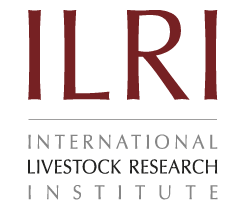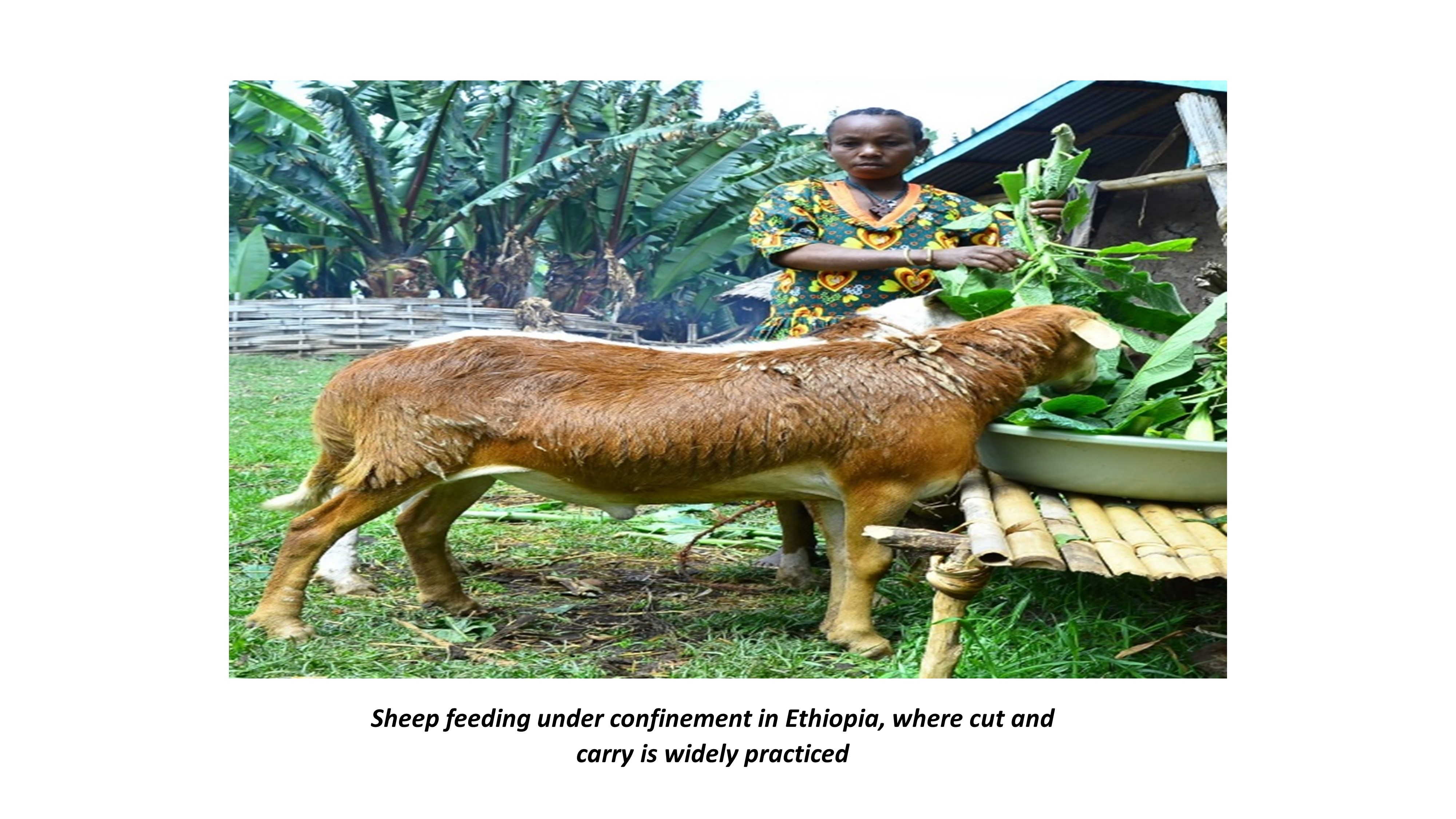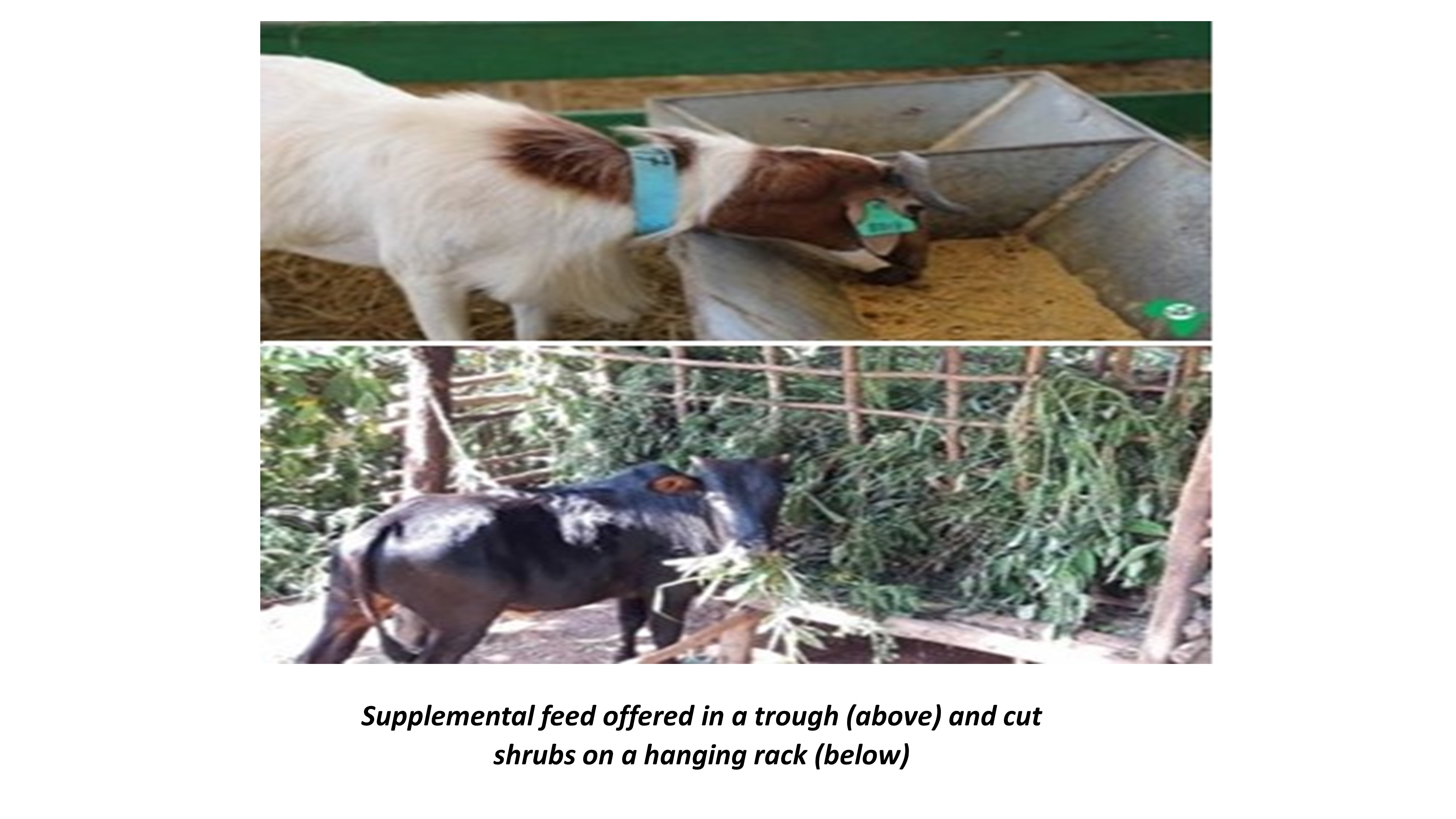Cut-and-Carry Fodder Systems
Summary
Under more extensive livestock production systems, small ruminants graze on vegetation growing on rangelands and pastures, often moving from place to place according to the season in search of food and water. An alternative approach is to feed animals through “Cut-and-Carry”, where feed is gathered and offered to confined animals; a system also referred to as zero grazing. Cut-and-Carry facilitates more efficient feed management by reducing wastage; but also places greater demand on labor and nearby vegetation resources. It also secures maximum advantage from crop residues and seasonally available vegetation. It allows for earlier returns, for example after weaning at four months, small ruminants raised under the Cut-and-Carry system can be fattened to 35 kg in only six months compared to 15 or more months under traditional grazing. Cut-and-Carry also facilitates the collection and use of manure as a valuable farm asset. In this system, animals can be confined and wholly dependent upon feed delivery (i.e., zero-grazing), or partially confined where animals intermittently graze in and around the homestead.
About the Solution
During free-grazing, large proportions of feed are lost due to trampling and contamination with urine and feces. The Cut-and-Carry system requires that fresh vegetation, usually grass, be cut daily and fed directly to contained livestock. It first came to prominence with dairy cattle but is also applicable to goats and sheep being raised for milk and meat. The main components of this system includes animal housing equipped with feed and water troughs, a continual and productive source of edible fresh vegetation and means to effectively cut and transport plant biomass. Cutting and transport is increasingly performed using power equipment. Fodder should be chopped into smaller pieces using either manual or power choppers. Feeding troughs can be constructed from wood, plastic, or metal, and be either free standing or attached to other structures. A 200-liter drum cut longitudinally in half and mounted onto a frame is a useful design. Troughs must be durable and stable to withstand trampling and being tipped over, provide ready access to feeding animals, and minimize risks of fecal contamination. Supplemental feeds accelerate weight gain and improve animal health, typically combining cereal grains, minerals and vitamins.
Cut-and-carry fodder systems are widely practiced in Ethiopia, Ghana, Kenya, and Nigeria, with large amounts of land devoted to the production of fodder biomass. A modified system is practiced in the Sahel where animals graze during the short rainy season, stubble graze following crop harvest and then fed stockpiled materials for the rest of the year. The system occurs in Burkina Faso, Mali, Niger, and Senegal, relying upon maize, sorghum, and millet stover as well as the haulms of grain legumes.
In dryland areas, fresh biomass is available for only part of the year so stockpiled crop residues constitute a major feed source. In wetter areas, some cropland is earmarked for production of large-statured perennial grasses such as Napier or Brachiaria; and cut throughout the year. Therefore, land allocation and crop residue management are key components of this feeding system. The quality of the fodder and crop residue depends on the time of harvest, the method of collection and preservation. Grass and crop residues may be harvested and dried in the field to about 12% moisture, allowing them to be stored for weeks or months.
Producers adopting Cut-and-Carry must have a suitable livestock shed, access to land and vegetation, sufficient labor, access to additional feed and veterinary supplies, and a premium market for their higher quality animal products. Goats and sheep require that well-balanced diets be delivered to them with goats preferring leaves of herbaceous plants and sheep favoring grass. Animals consume up to six kg of fresh fodder per day, depending upon their stage of development.
Commercialization
Commercially available
Solution Images
Institutions



